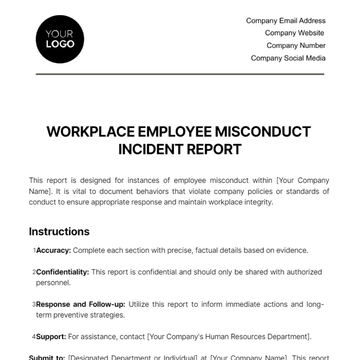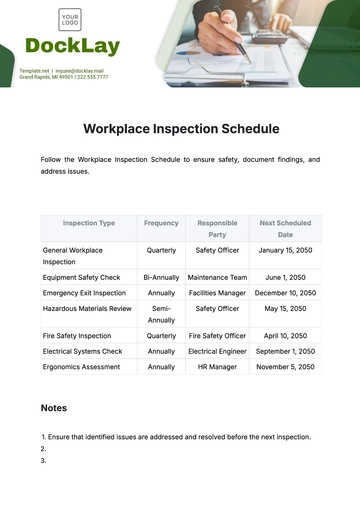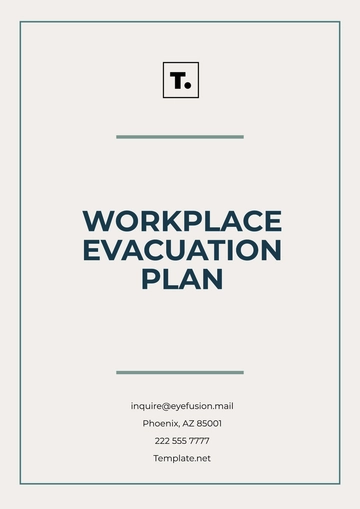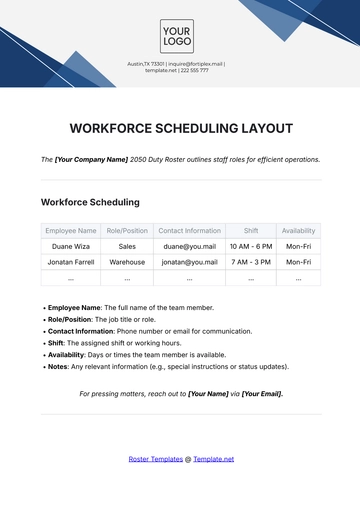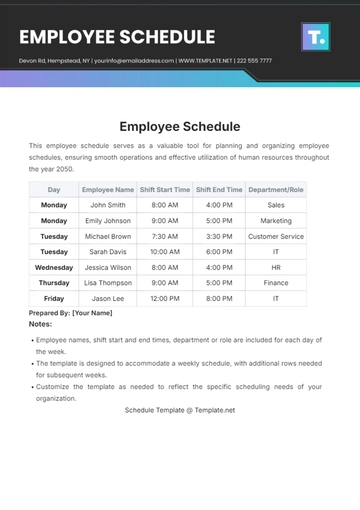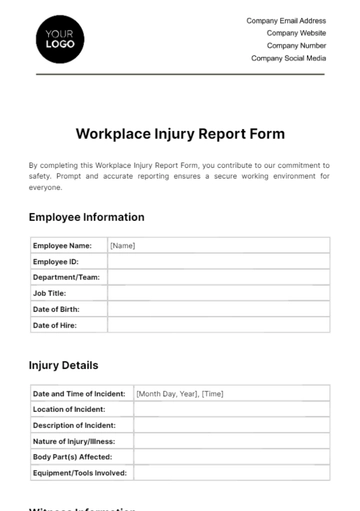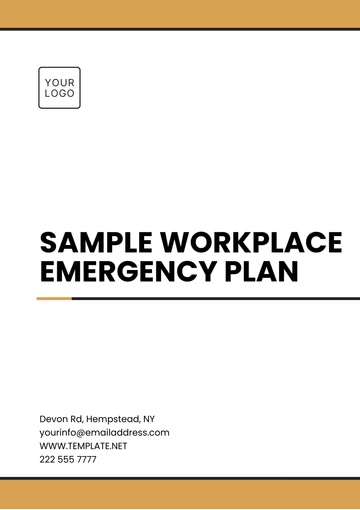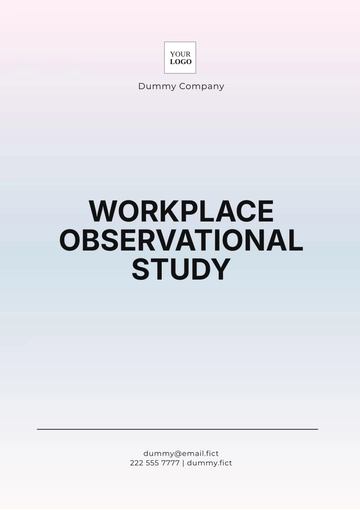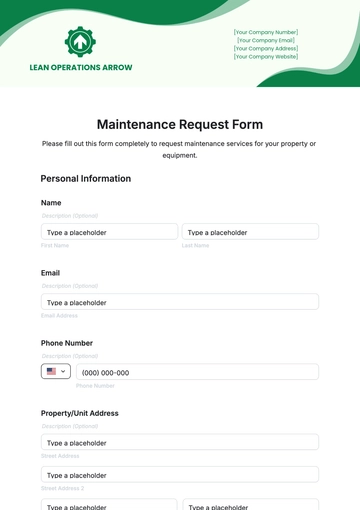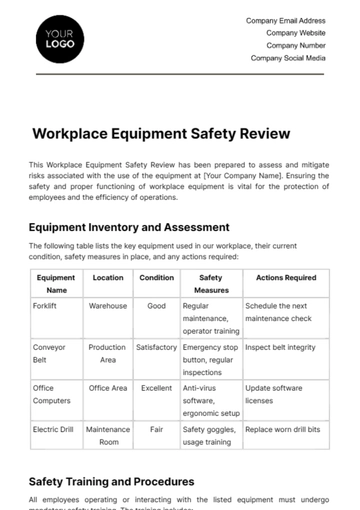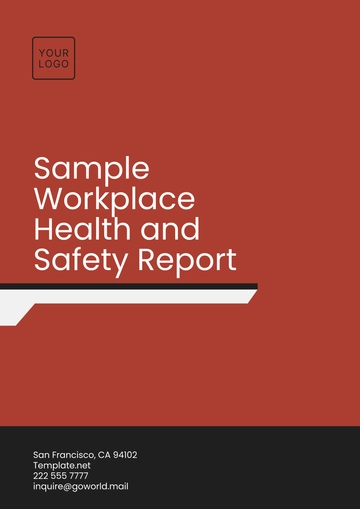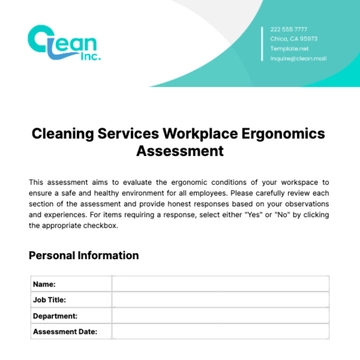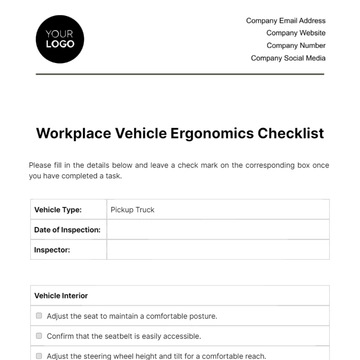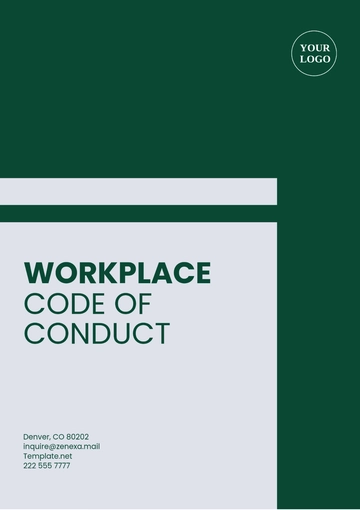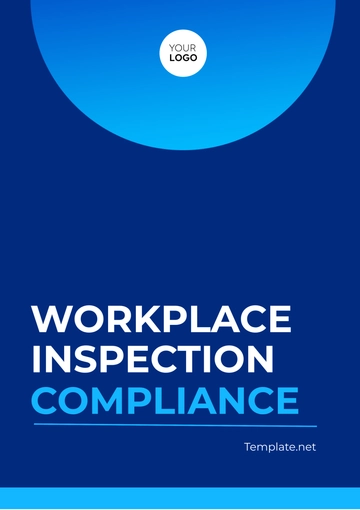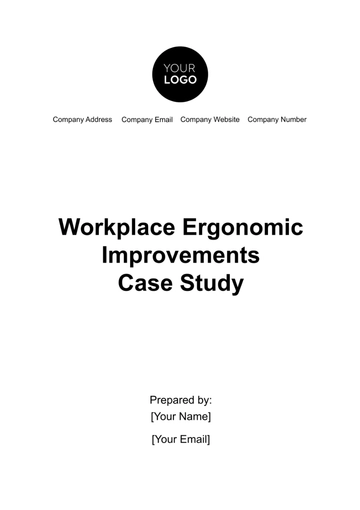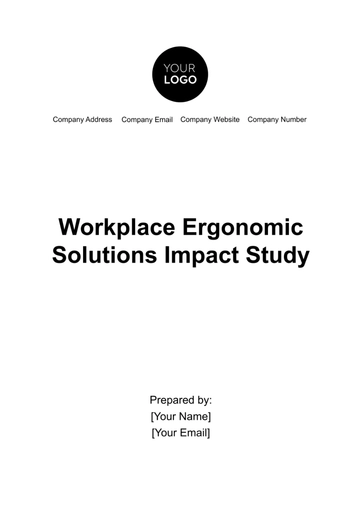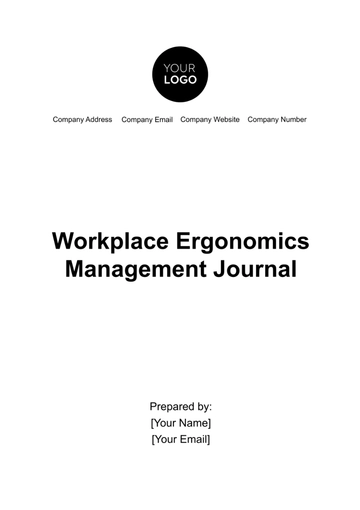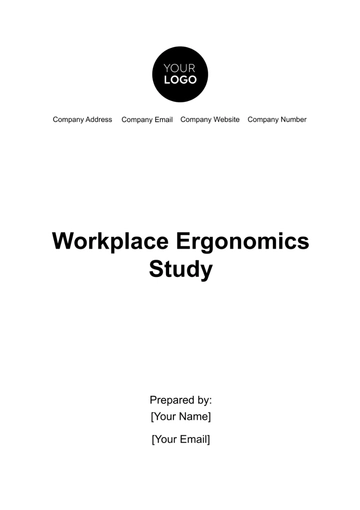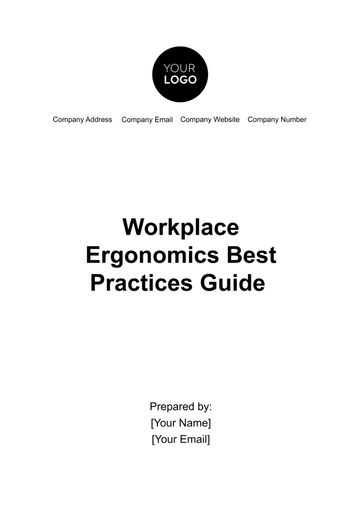Free Workplace Ergonomics Study
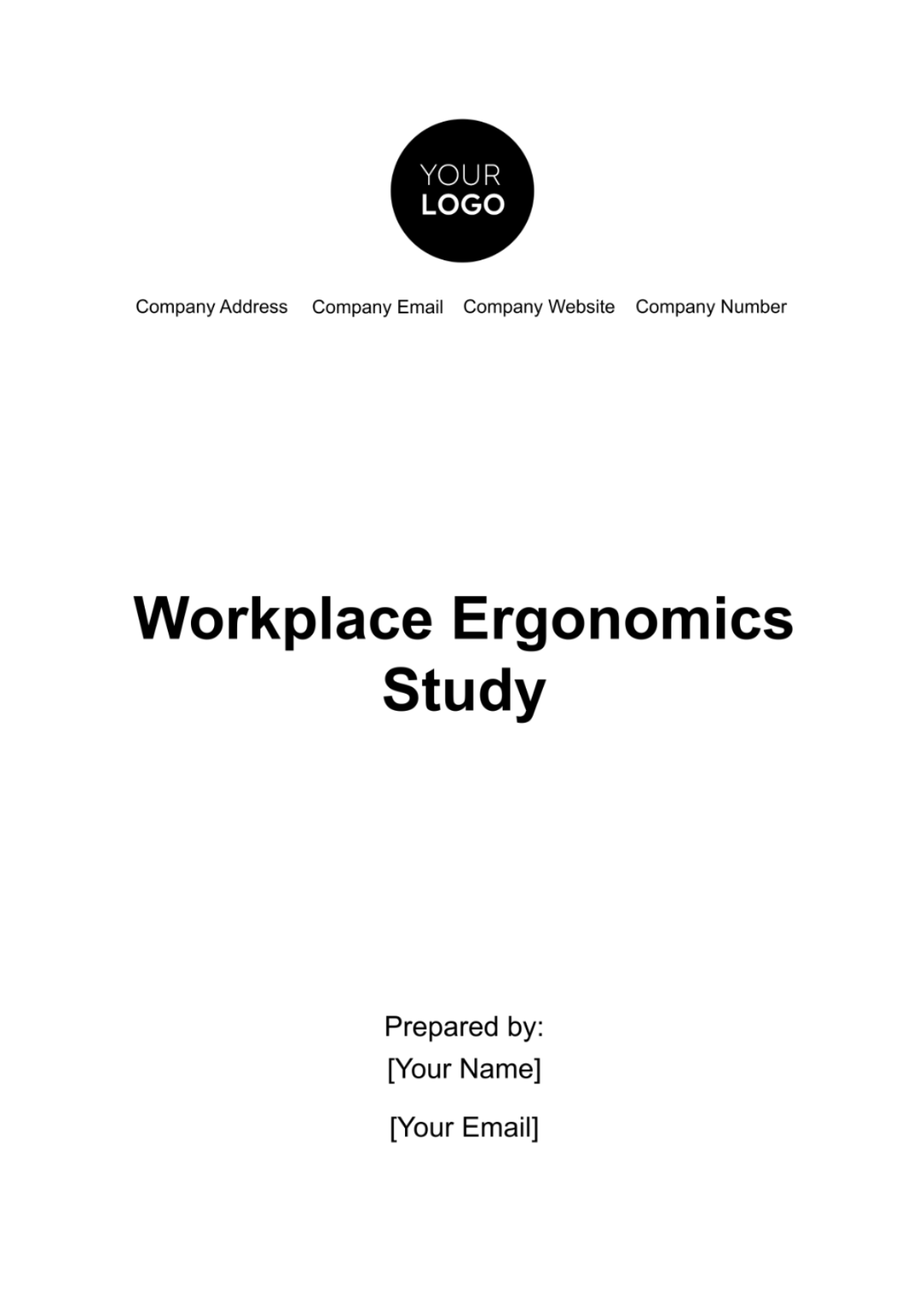
Introduction
A. Background
[Your Company Name] embraces innovative approaches to enhance employee experience. Recognizing the pivotal role that workplace ergonomics plays in the overall well-being, job satisfaction, and productivity of our workforce, this study is initiated to delve deep into the current ergonomic landscape within our organization.
The rationale behind this study is rooted in the understanding that a well-designed and ergonomically sound workplace not only contributes to the physical health and comfort of employees but also has a direct impact on their morale, creativity, and overall job performance. As the nature of work continues to evolve, with an increasing emphasis on flexibility and diverse work arrangements, the importance of ergonomic considerations becomes more pronounced.
B. Objectives
The primary objectives of this workplace ergonomics study are crafted to align with the overarching goal of creating a work environment that nurtures both the physical and mental well-being of our employees:
Evaluate the Current Ergonomic Setup: Conduct a comprehensive assessment of the existing ergonomic infrastructure at [Your Company Name], considering workstations, seating arrangements, lighting, and other relevant factors.
Identify Potential Risk Factors: Systematically identify and analyze factors that may contribute to discomfort, musculoskeletal issues, or other health-related concerns among our employees.
Propose Practical Recommendations: Based on the findings, develop actionable recommendations aimed at improving ergonomic conditions, with a focus on immediate and long-term solutions.
Enhance Productivity and Job Satisfaction: Implement ergonomic interventions strategically to not only address physical concerns but also positively impact employee productivity, job satisfaction, and overall engagement.
Scope
A. Inclusions
To ensure a comprehensive evaluation, this study will encompass the following aspects of the workplace environment:
Workstation Design and Layout: Assess the configuration of workstations, considering factors such as desk arrangement, accessibility, and utilization of space.
Seating Arrangements and Ergonomics of Chairs: Evaluate the design and ergonomics of office chairs, considering the impact on posture, comfort, and overall well-being.
Lighting Conditions within Workspaces: Analyze the lighting setup in work areas, addressing aspects of brightness, color temperature, and their impact on visual comfort.
Utilization of Space and Accessibility: Examine how the physical space is utilized and assess its accessibility to employees with varying needs.
Employee Work Habits and Routines: Understand and factor in individual work habits and routines that may influence ergonomic conditions.
B. Exclusions
To maintain clarity and focus, the study will not cover:
Non-Office Areas: Ergonomic conditions in spaces outside traditional office areas, such as manufacturing or production floors.
General Company Policies: Company-wide policies that are unrelated to direct ergonomic concerns will be excluded to streamline the study's scope.
External Factors: Consideration of external factors beyond the immediate control of [Your Company Name].
Methodology
A. Data Collection
To gather comprehensive data, a multi-faceted approach will be employed, including:
On-Site Observations: Trained observers will assess the ergonomic setup of workspaces, considering factors like layout, furniture design, and lighting.
Employee Surveys: A structured survey will be distributed to employees, gathering insights into their perceived ergonomic comfort, concerns, and suggestions for improvement.
Ergonomic Assessments: Qualified ergonomic professionals will conduct individual assessments, focusing on posture, seating ergonomics, and other relevant factors.
B. Sample Size and Selection
A representative sample of [Your Company Name]'s workforce will be selected based on:
Departmental Representation: Ensuring participants are drawn from various departments to capture a diverse range of job roles.
Volunteer Basis: Employees will be invited to participate voluntarily to ensure a genuine reflection of their experiences.
Ergonomic Risk Assessment
A. Workspace Layout
The assessment of workspace layout will involve:
Configuration Analysis: Reviewing the arrangement of workstations to identify any inefficiencies or ergonomic shortcomings.
Space Utilization: Analyzing how space is utilized, considering both individual workspaces and collaborative areas.
B. Furniture and Equipment
Evaluation of furniture and equipment will include:
Chair Ergonomics: Assessing the design and adjustability of office chairs, considering factors such as lumbar support, seat height, and armrests.
Desk Design: Examining the ergonomics of desks, including considerations for height, depth, and organization.
C. Lighting and Environment
Assessment of lighting conditions and environment involves:
Lighting Quality: Evaluating the brightness, color temperature, and distribution of lighting within workspaces.
General Environment: Considering factors like noise levels, air quality, and overall comfort.
Health and Productivity Impact
A. Physical Health
In assessing the physical health impact of the current ergonomic conditions, the study aims to:
Musculoskeletal Health: Analyze reported cases of discomfort, pain, or musculoskeletal issues among employees, categorized by department or job role.
Healthcare Utilization: Examine the frequency of healthcare visits related to ergonomic concerns, providing insights into the direct health impact.
Employee Feedback: Utilize survey data to capture subjective experiences and perceptions regarding the influence of ergonomic conditions on physical health.
The findings from this section will provide a comprehensive overview of the current state of physical health within [Your Company Name] in relation to ergonomic factors.
B. Productivity
Understanding the correlation between workplace ergonomics and productivity is crucial. This section will:
Performance Metrics: Analyze key performance indicators (KPIs) such as task completion times, project deadlines, and overall output correlated with perceived ergonomic comfort.
Absenteeism and Presenteeism: Examine the impact of ergonomic conditions on absenteeism (employees not attending work) and presenteeism (employees attending work but with reduced productivity due to health issues).
Employee Surveys: Use survey data to gather subjective feedback on how ergonomic improvements could positively influence daily tasks and overall work performance.
The insights gained from this section will enable us to establish a clear connection between workplace ergonomics, employee well-being, and overall productivity.
Recommendations
A. Short-Term Improvements
Based on the identified issues and immediate needs, short-term recommendations will include:
Quick Fixes: Propose immediate, cost-effective solutions to address urgent ergonomic concerns, such as providing ergonomic accessories or adjusting workstation layouts.
Training Initiatives: Implement short-term training programs to educate employees on proper ergonomic practices, promoting awareness and self-adjustment.
B. Long-Term Solutions
For sustained improvement, long-term recommendations will focus on:
Infrastructure Changes: Propose structural changes, such as investing in ergonomic furniture or redesigning workspaces, to create a foundation for lasting improvements.
Comprehensive Training Programs: Develop ongoing training programs to instill ergonomic best practices and create a culture of proactively managing one's ergonomic environment.
Periodic Assessments: Recommend regular ergonomic assessments to adapt to evolving work practices and ensure continued alignment with employee needs.
Implementation Plan
A. Timeline
Crafting a well-defined timeline is essential for the successful implementation of ergonomic recommendations. This timeline will include:
Short-Term Actions: Specify immediate actions to be taken within the first weeks or months after the study's completion, addressing pressing ergonomic concerns.
Long-Term Initiatives: Outline the phased implementation of long-term solutions, considering the time required for infrastructure changes, training programs, and organizational adaptation.
Review Points: Establish regular review points to assess progress and adjust the implementation plan based on real-time feedback and evolving organizational needs.
B. Budget
A realistic budget is crucial for executing the proposed ergonomic improvements. This budget will encompass:
Immediate Costs: Estimate expenses related to short-term improvements, including the purchase of ergonomic accessories, training materials, and any quick fixes.
Infrastructure Investments: Project the budget required for long-term changes such as purchasing ergonomic furniture, redesigning workspaces, and implementing comprehensive training programs.
Contingency Fund: Include a contingency fund to accommodate unforeseen costs or adjustments during the implementation phase.
Monitoring and Evaluation
A. Key Performance Indicators (KPIs)
Establishing measurable KPIs is vital for tracking the success of ergonomic interventions. These KPIs may include:
Employee Satisfaction Surveys: Regularly administer surveys to gauge employees' satisfaction with the implemented ergonomic changes.
Healthcare Utilization Metrics: Track changes in healthcare utilization related to ergonomic concerns, aiming for a reduction in reported issues.
Productivity Metrics: Continuously monitor productivity metrics to assess the impact of ergonomic improvements on overall work performance.
B. Periodic Assessments
To ensure the sustained effectiveness of ergonomic interventions, periodic assessments will be conducted:
Annual Ergonomic Audits: Schedule annual audits to reevaluate the ergonomic conditions, identifying any emerging issues or areas for further improvement.
Feedback Loops: Establish open channels for continuous feedback from employees, encouraging them to report ergonomic concerns and suggestions for ongoing enhancements.
Adaptability: Develop a framework that allows for the adaptability of ergonomic solutions to accommodate changes in technology, work practices, and organizational structure.
- 100% Customizable, free editor
- Access 1 Million+ Templates, photo’s & graphics
- Download or share as a template
- Click and replace photos, graphics, text, backgrounds
- Resize, crop, AI write & more
- Access advanced editor
Introducing the Workplace Ergonomics Study Template from Template.net. Crafted with precision, this editable and customizable template streamlines your ergonomic assessments effortlessly. Utilize our Ai Editor Tool to personalize your study, ensuring workplace comfort and productivity. Elevate your workspace today with this comprehensive template solution.
